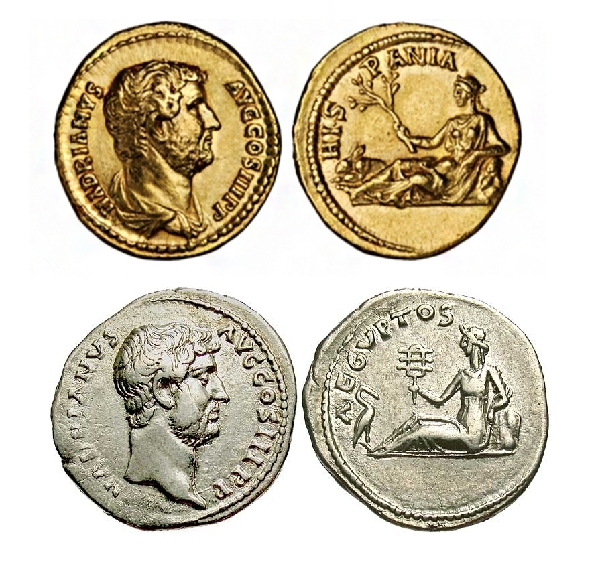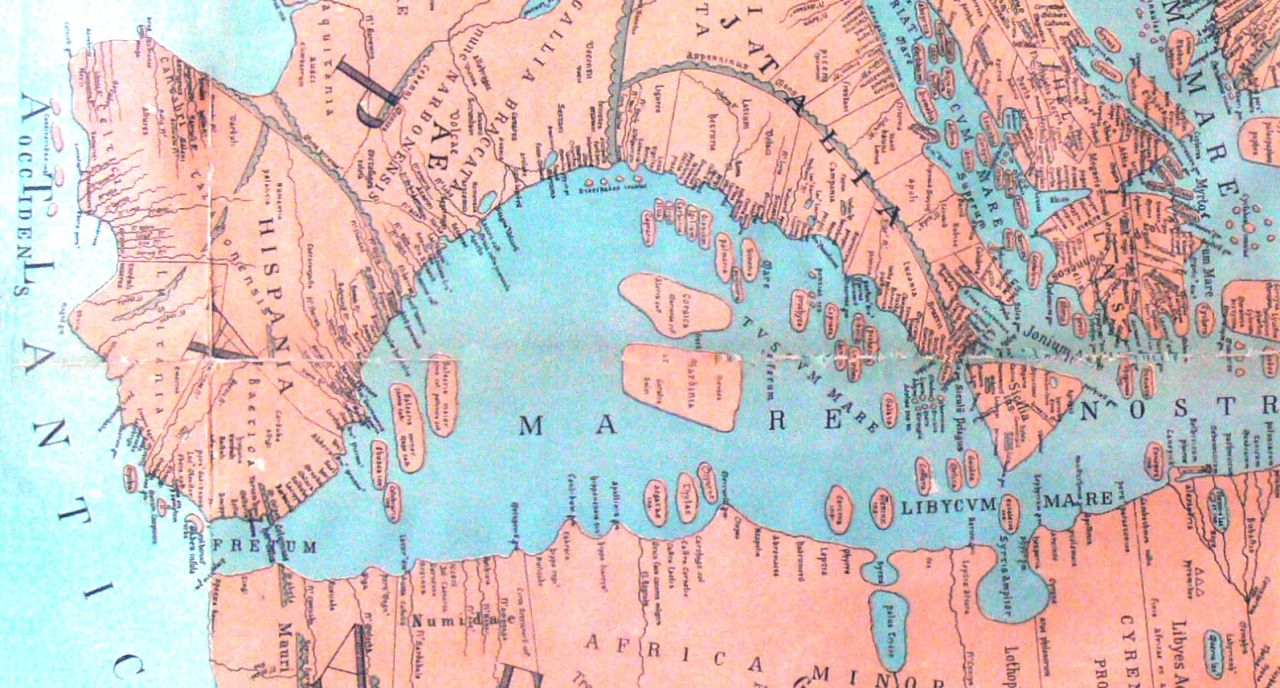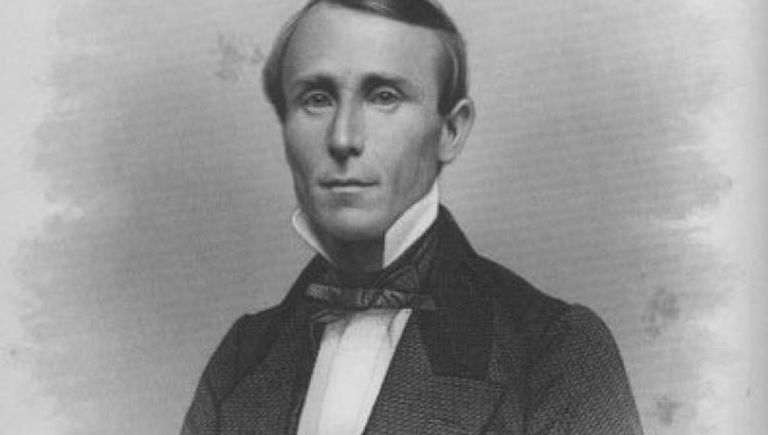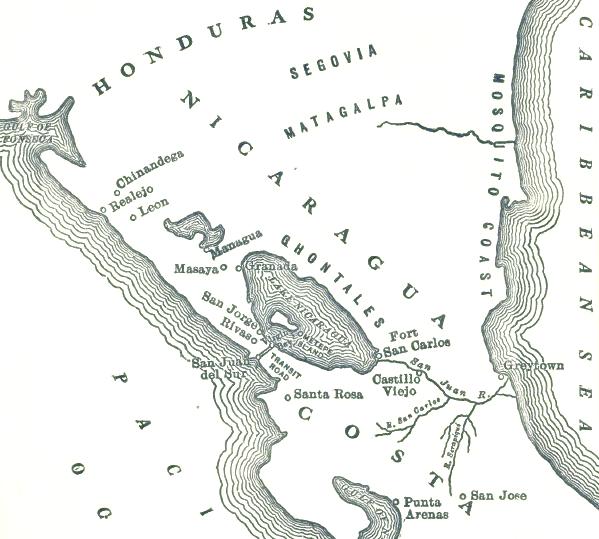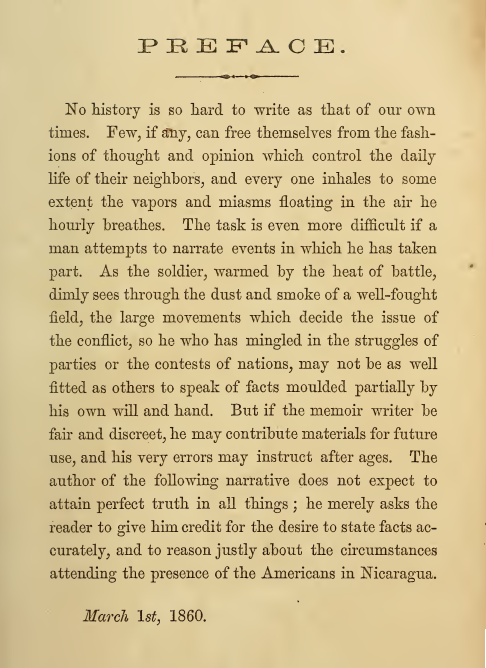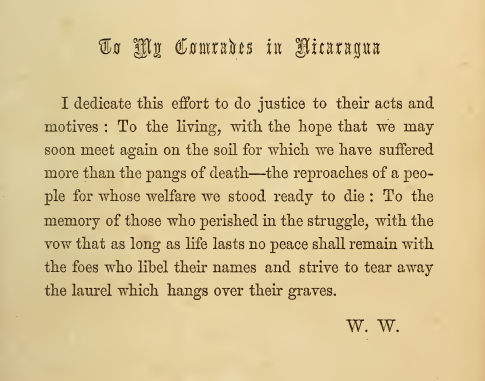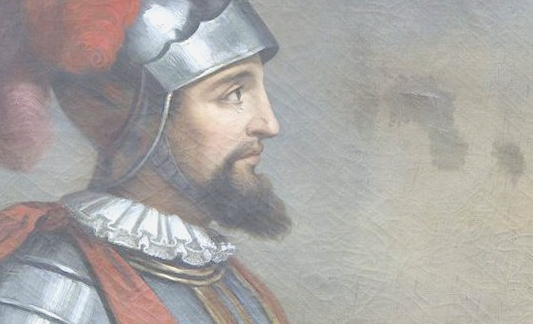
Balboa was a regular Spaniard living in the large Caribbean island Hispaniola, attempting a life as a farmer and having gotten into significant debt, who snuck aboard a boat bound for conquest under the flag of King Ferdinand of Spain. He was escaping his debt and hopefully paying it off with won riches. His boarding the boat took place by him hiding in a wooden barrel with his war dog Leoncito, who plays a small role in his story as a vicious and useful member of the conquistador force, as war dogs commonly were. The leader of the boat was also his debtor, who he confronted and was accepted by as a member of the mission. They were initially trying to make conquests in northern Colombia (around what is now Cartagena, but was then the newly founded settlement of San Sebastian de Uraba in Nueva Andalucia). The natives there were very hostile, however, and used poison arrows, and Balboa suggested they try someplace easier, namely moving the settlement of San Sebastian to Darien (Panama), which they did.
After the initial victory in the what the Spanish made to be the settlement of Santa Maria la Antigua del Darian (in Panama), Balboa became leader of the Spanish crew. He had become popular with the crew earlier, for his personality, his knowledge of the area they were sailing, the time they all spent together in battles against the poison-arrow wielding indians of Colombia while waiting for their leader to return from Hispaniola after being injured in the leg. And now, the popular Balboa took leadership from Enciso as alcalde mayor by legal means. Because Enciso was actually on a mission for a leader who controlled a different part of the Spanish Caribbean territory, his mandate in Darien was illegitimate, and 'should be' arrested. Balboa acted as spokesperson in this action, and was afterwards elected as one of two alcaldes there (the other was Martin Samudio, who doesn't play a role in this story). There was almost another change in government when those actually entitled to rule that part of the Carbbean heard about the action's of Balboa at al, and vowed to punish him and take over, but they weren't allowed to set foot on land by the mob that appeared to greet them, and the unseaworthy boat, ill-supplied, was not heard from again.
Balboa's leadership was cemented when, while he was away attacking another village, the malcontents in his party who were left behind formed an insurrection in order to appropriate the large quantity of gold they had all won, and distribute it among them. The leader of this insurrection, however, wanted a greater portion for himself, and this led to dissatisfaction with his leadership, and recalled the usefulness of Balboa as leader, who had been fair in distribution of spoils. Balboa was passing his refuge away from the village with a party of his supporters in the jungle, and when the envoy from the settlement reached him to ask him to return as leader, and swore to obey him as leader thereafterward, he initially acted like he didn't want to go back to the thankless job, but after seeing a letter about how he was being tried as a criminal against the crown in Spain, he did return (is that the letter or am I forgetting?)
This led him to undertake the mission he is famous in history for. They had discovered by chance, from one of the offhand remarks of one of the princes they were dealing with, of a very gold-rich land to the south, which they could reach by "the other sea." Balboa sent for more men to undertake this mission (he had been told by the prince that he would need at least 1000 men), and Balboa sent a request to Spain but these didn't come. Since his case was being heard in Spain and to his disfavor, he now (it was September 1513) made the journey of about 68 miles (110 km) across the Panamanian Isthmus, making battle here and there with various tribes. The journey all in all took 24 days to reach the mountain where he saw the South Sea, then another 5 days down to the coast, encountering with his band of 100 Spanish soldiers (accompanied by 1000 indian carriers, and not counting his other 90 soldiers he left in a defeated village to provide him with an escape route if later necessary), overwhelming them easily with the combined power of war dogs, fire arms, crossbows, swords, and plate armor, losing only a couple of men killed or injured. He reached the coast after dispatching three parties of 12 of his men first (the first man to enter the then-called "South Sea" was one of these men. He claimed the ocean for the Spanish crown. They arrived September 29 and named the place San Miguel. Because they had travelled south to the new sea, he named it "The South Sea." The tribes living there were respectful of his superior power, and gave him all the gold and pearls they had, showing him where more could be found. In return they were happy to receive European shirts, glass beads, etc., which had more value to them than gold and pearls, which had barely any value. He conquered a few villages to the south on the coast, then tried to push on to the islands of pearls nearby, but was canoe-wrecked right away since it was the season of storms, and returned back to the beach. He took a different route back to Antigua, and on the way back to the Spanish settlement, laden with so much gold and pearls the party wasn't able to carry enough food and water (and some died of this along the way), they encountered other tribes which fled or put up little fights.
Meanwhile, back is Spain, the public matter of Balboa's actions had been discussed for about a year (I think), since some enemies of his returned and charged him with illegally taking control of Darien (Panama and northern Columbia today). He was seen in the light of criminal, which was a strong impetus for his finally leaving the Caribbean coast where he had established his local power (the site of a preexisting tribe's village, composed now of 200 straw-thatched huts, 500 Spaniards, and 1500 indians, growing richly with gardens of produce, the site of his first conquest, where he had married the daughter of the local ruler in his hut after the day's battle, and by accounts was basically in love with her) to find for Spain the farther ocean, which none had yet found (at the same time, Magellan was circumnavigating the globe, travelling down the Atlantic Coast of South American, rounding Patagonia northwards a little, but then directing himself Westward to the Pacific Islands and then Indonesia, and it wasn't until half a century later in the 1570s the English sea captain Drake sailed around South America from the easternmost point of Brazil and around and north all the way to California (or perhaps Canada, we don't know the details of his secret mission for Queen Elizabeth).
However, Balboa was now able to dispatch to the queen a couple of his men, laden with the fifth of gold entitled to the King, the largest and best of the pearls, and news of Balboa's "great discovery" and claiming for Spain the South Sea, and opinion of how to frame Balboa as a Spaniard changed.
Now Darian shone with a new light to Spaniards, too. It was now to be referred to as the "Golden Castile," (before that it was being called "New Andalusia") and since for Europeans gold was the driving purpose for activity in the New World, that for which they went, which they volunteered, braved risks, fought, died, and killed for, which purchased peace with the native tribes, which purchased favor in the Spanish court, which was the subject of conversation in Spain,
Before Balboa's own emissary could reach the king with his gifts and story, Kind Ferdinand had spent 50,000 crowns on a mission there, in which there were to be 2,000 soldiers with arms, equipment and money, and a person more fit in the eyes of the king to take over control of the realm instead of Balboa. (Also religious men, and an order that no lawyers should be permitted to practice there, however one lawyer did go, as alcalde mayor (chief judge), Gaspar de Espinosa.
When Pedrarias (the man appointed by the king to rule Darian) arrived, he found the present leader, Balboa, overseeing the rethatching of his fairly humble straw house, rather than seated in golden opulence.
In the months that followed, Balboa was imprisoned by Pedrarias and in all events that followed Balboa was nothing but meek and subservient to all sources of authority, at length protesting to the priest who on his behalf arranged a marriage to Pedrarias' and his wife Dona Isabel's eldest daughter by signing an contract (the daughter was in Spain) and sending for her to solemnize the wedding when she arrived. Through this a peace was formed, which may have benefited Pedrarias as Balboa's potential future achievements would serve both.
During this time, King Ferdinand had sent a messenger with news that he had made Balboa adelandtado of the great South Sea, and governor of the provinces of Coyba and Panama, while Pedrarias was left governor of the Caribbean side, with a note that in this position Pedrarias was to expand the king's interests as befitted his position. Balboa's position, however, while he had been placed over the valuable lands while Pedrarias' were fairly valueless, was subject to the authority of Pedrarias, and Balboa agreed to a term with Pedrarias whereby Balboa would not exercise the authority he had without approval of Pedrarias.
During this time, other envoys were sent out to the tribes, but these did not find the easy victories Balboa's first encounters had had. Many were defeated and returned defeated, among some victories. Balboa, too, when he was released and allowed to undertake another mission (to construct ships, assemble them on the Pacific, and sail south to the land of riches many tribes had told him about) met with his first defeat to the natives. In this defeat, he had a co-commander appointed by Pedrarias, who died by a spear to the chest while Cortez was only injured after a force of indians attacked their canoes in their own canoes, and many drowned when the indians plunged in the water to overturn their boats, or died from the arrows of the indians. The natives also attacked and harried the land in and around the Spanish settlements, so that people lived in fear of their houses all being burned down. Indian chiefs united in some cases to drive the Spanish out of their lands. In part this was said to be due to the behavior of the Spanish, worse than Balboas, with regard to torture and taking of women and children.
The 2,000 Spanish who came brought a good amount of provisions, but a large portion were found to have rotted, and a serious famine was felt in the settlement. 700 died. Some others left for Cuba in a boat. Others returned to Spain. Others hired themselves out as laborers to eat, and could be seen selling their last valuables in the streets. All without ever starting on any missions or using the weapons and equipment they had brought.
The means by which Pedrarias was able to get rid of Balboa finally was this: Another governor had been dispatched from Spain to take over for Pedrarias (not sure about 'take over'), but died in the harbor. Balboa was not sure where he sat in all these changes, because if the new leader took over for Pedrarias, the new leader's favorites might be appointed to take over instead of Balboa. He therefore sent a messenger back to get a clear picture of what was going on in the settlement. He chose a man who he had long served with but who, according to the stories, bore him a grudge because while paying court to Balboa's indian princess wife was seen by Balboa and reprimanded. When this man, one Garabito. A condition of Balboa's marriage to the governor's daughter was that he cut off relations with his indian wife, which Balboa had of course agreed to. However, when Garabito was apprehended in Antigua and treated as a spy, he let slip that Cacita (the princess who had still not returned to her father, perhaps partly because she may have been viewed as a traitoress after betraying her brother, who had been trying to save her before the impeding planned attack of Balboa's first settlement, into torture at Balboa's hands, in which he was forced to relate the entire military strategy, which was then foiled by a preventative attack by the Spaniards)... that Balboa had sent for her to come to the Pacific. The idea was that Balboa was setting up his own station of government there, which doesn't seem likely to be true, but was true enough for Pedrarias, who charged him with treason (punishable by death). When Cacita was questioned she confirmed it. A message was sent to the coast to Balboa that he come to Antigua, and although he questioned the messengers, they did not tell him what was going on there, and despite the protests of his men, he went. He was put in shackles immediately by Pizarro (who had also long served under him), tried, and executed, along with four of his men who had participated in warning or supporting Balboa.
He was executed (decapitated) in 1519 at age 43 or 44. He had been by that time ten years in the Darian, having left Hispaniola in 1509, and it had been six years since he discovered the South Sea. By the time he left Hispaniola in 1509, however, he already had experience in conquest and sailing around the Caribbean, as he had crossed from Spain in 1501 on a treasure-finding mission for the king, and it was with his share of this mission that he had settled as a farmer in Hispaniola.

